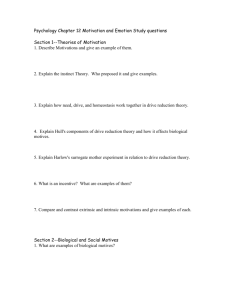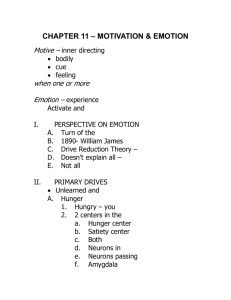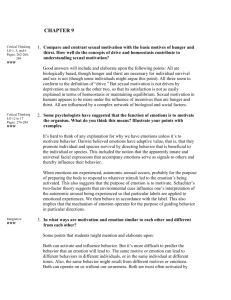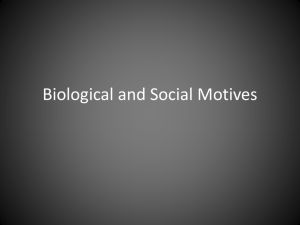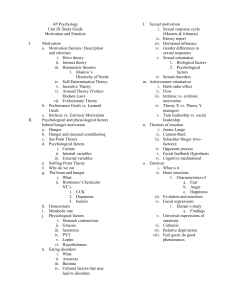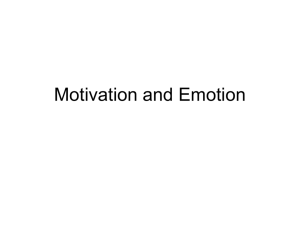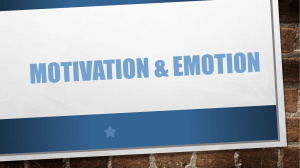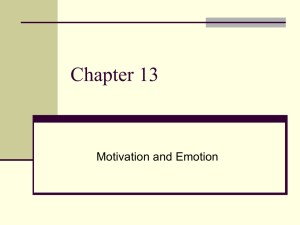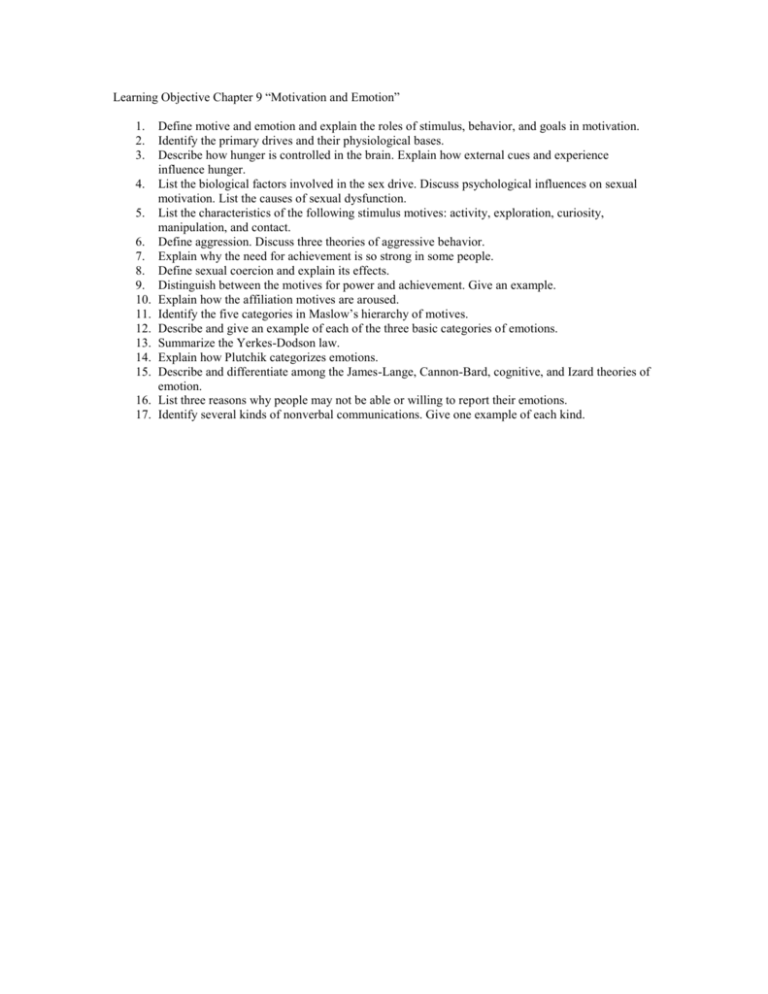
Learning Objective Chapter 9 “Motivation and Emotion”
1.
2.
3.
4.
5.
6.
7.
8.
9.
10.
11.
12.
13.
14.
15.
16.
17.
Define motive and emotion and explain the roles of stimulus, behavior, and goals in motivation.
Identify the primary drives and their physiological bases.
Describe how hunger is controlled in the brain. Explain how external cues and experience
influence hunger.
List the biological factors involved in the sex drive. Discuss psychological influences on sexual
motivation. List the causes of sexual dysfunction.
List the characteristics of the following stimulus motives: activity, exploration, curiosity,
manipulation, and contact.
Define aggression. Discuss three theories of aggressive behavior.
Explain why the need for achievement is so strong in some people.
Define sexual coercion and explain its effects.
Distinguish between the motives for power and achievement. Give an example.
Explain how the affiliation motives are aroused.
Identify the five categories in Maslow’s hierarchy of motives.
Describe and give an example of each of the three basic categories of emotions.
Summarize the Yerkes-Dodson law.
Explain how Plutchik categorizes emotions.
Describe and differentiate among the James-Lange, Cannon-Bard, cognitive, and Izard theories of
emotion.
List three reasons why people may not be able or willing to report their emotions.
Identify several kinds of nonverbal communications. Give one example of each kind.

